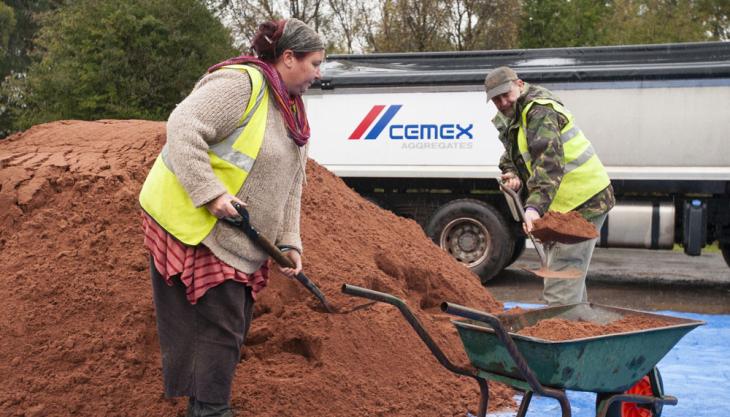CEMEX UK help out with reburial of Messines

Company donates sand to protect historic scale model of Belgian town built by prisoners of war
ARCHAEOLOGISTS have begun the careful reburial of a unique model of the Belgian town of Messines, which was constructed on Cannock Chase, in Staffordshire, to commemorate a famous victory in World War I and to help train troops for future battles.
A team of archaeologists working on behalf of Staffordshire County Council and funded by Natural England uncovered the historic treasure, which covers an area of more than 1,400 square metres, after a painstaking dig.
The scaled terrain model representing the town of Messines and its surrounding landscape was built by German prisoners of war at Brocton Camp in 1918 under the supervision of the New Zealand Rifle Brigade.
In 1917 the Messines Ridge formed an anchor in the German front lines, but a week-long offensive comprising infantry attack, aerial bombardment and heavy shelling resulted in an Allied victory in June of that year. The battle was fought in the build-up to the much larger Passchendaele offensive, which began the following month.
Following the return of the New Zealand Rifle Brigade outfit to Brocton Camp, they had the scaled replica of their sector of the battlefield built to serve as a training aid and as an act of commemoration.
Prisoners of war, under the guidance of the rifle brigade, built the model and rendered it in concrete. Depicted in the concrete are railway lines, trenches and roads; contour lines are also represented and the model was properly aligned to the compass.
Owing to the scale and fragility of the model, it is believed that it could be lost in just six months if left uncovered and exposed, so reburial was regarded as the only way to protect and preserve it.
Philip Atkins, leader of Staffordshire County Council, said: ‘The excavation of the Messines model has been an amazing project, and the team has done a wonderful job in bringing it to life. However, it would be lost to the elements if we didn’t re-cover it.
‘Around 120 tonnes of sand are needed and in the coming days the site will poignantly disappear, although the memories that it has evoked and the story that the excavation has told will undoubtedly live on.
‘I am delighted that CEMEX have made the generous offer to donate the sand and it seems particularly fitting that material from a Staffordshire quarry should be used to preserve such an important Staffordshire find.’
Experts from the county council have worked closely with specialists from the No Man’s Land charity and local volunteers to ensure the site is properly protected from damage by rabbits, tree root growth and the weather.








